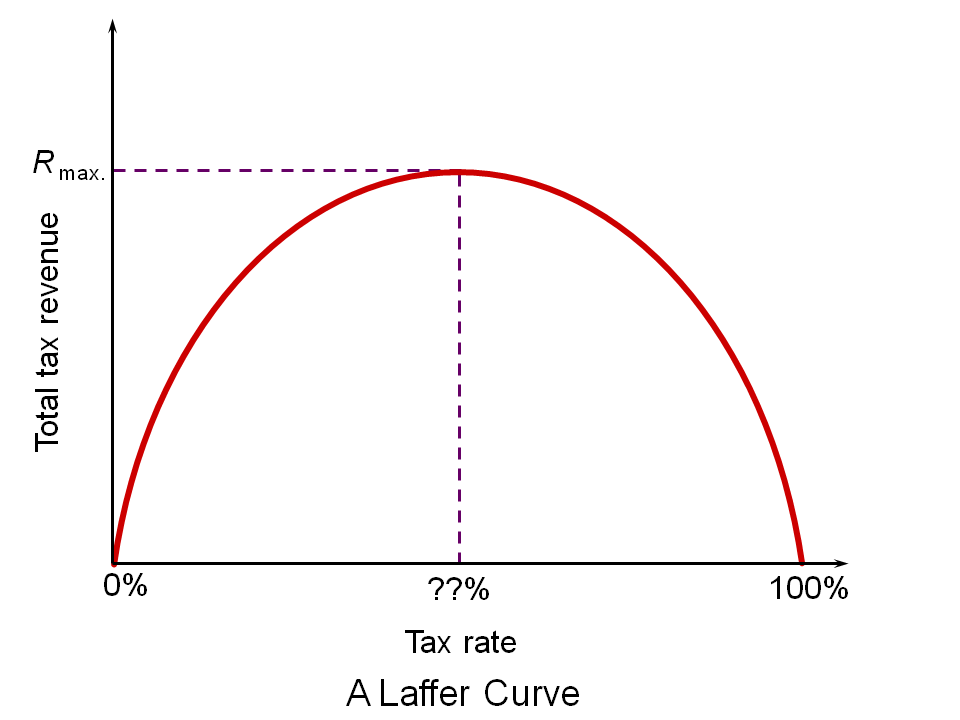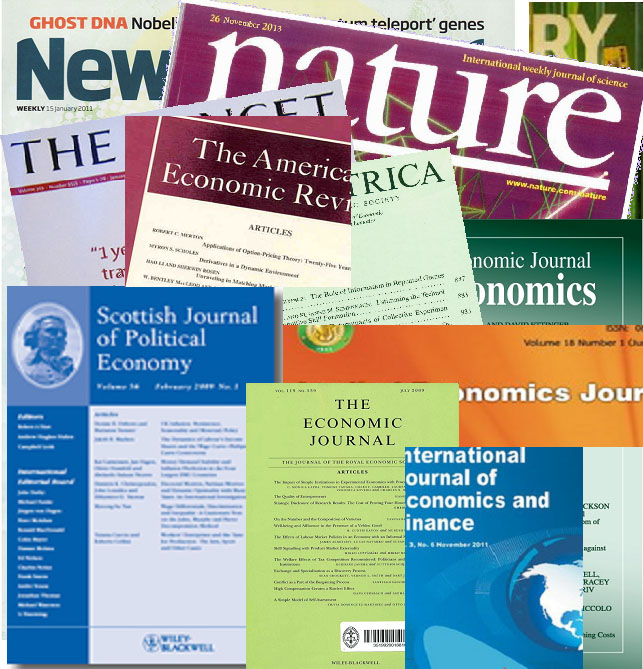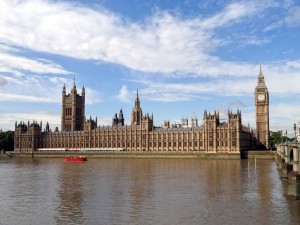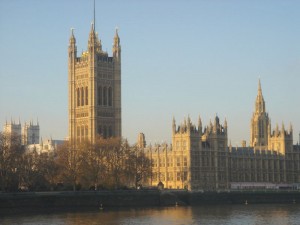 Recently there have been calls from business leaders and Conservative politicians to scrap the UK’s 50% income tax rate, which is paid on taxable incomes over £150,000. The 50% income tax rate is thus paid by top earners, who comprise around just 1% of taxpayers.
Recently there have been calls from business leaders and Conservative politicians to scrap the UK’s 50% income tax rate, which is paid on taxable incomes over £150,000. The 50% income tax rate is thus paid by top earners, who comprise around just 1% of taxpayers.
And yet the government receives about 30% of income tax revenue from this 1% – and this was before the introduction of the 50% rate in April 2010. (In fact, with the marginal national insurance rate of 2%, top earners are paying an effective marginal rate of 52%.)
One argument used by those who favour reducing the 50% rate is that the rich would pay more income tax, not less. There are four reasons given for this. The first is that people would be encouraged to work harder and/or seek promotion if they knew they would keep more of any rise in income. The second is that fewer rich people would be encouraged to leave the country or to relocate their businesses abroad. The third is that more people would be encouraged to work in or set up businesses in the UK. The fourth is that there would be less temptation to evade taxes by not declaring all income earned or to find clever ways of avoiding tax.
These arguments were put forward in the 1980s by Art Laffer, an adviser to President Reagan. His famous ‘Laffer curve’ (see Economics (8th edition) Box 10.3 or Economics (7th edition) Box 10.4) illustrated that tax revenues are maximised at a particular tax rate. The idea behind the Laffer curve is very simple. At a tax rate of 0%, tax revenue will be zero – but so too at a rate of 100%, since no-one would work if they had to pay all their income in taxes. As the tax rate rises from 0%, so tax revenue would rise. And so too, as the tax rate falls from 100%, the tax rate would rise. It follows that there will be some tax rate between 0% and 100% that maximises tax revenue.
Those arguing that a cut in the top rate of income tax would increase tax revenue are arguing that the 50% rate is beyond the peak of the Laffer curve. But this is an empirical issue. In other words, to assess the argument you would need to look at the evidence as, theoretically, the peak of the Laffer curve could be below or above 50%. Indeed, some argue that the peak is more likely to be at around 75%.
The following podcasts and articles consider the arguments. As you will see, the authors are not all agreed! Consider carefully their arguments and try to identify any flaws in their analysis.
Update
On 27 June 2012, Arthur Laffer appeared on the BBC Today Programme to discuss the Laffer curve and its implications for UK income tax policy. You can hear it from the link below
Podcasts
 Should the 50p tax rate be ditched? BBC Today Programme, John Redwood and Paul Johnson (3/3/12)
Should the 50p tax rate be ditched? BBC Today Programme, John Redwood and Paul Johnson (3/3/12)
 Arthur Laffer: Tax rate should ‘provide for growth’ BBC Today Programme (27/6/12)
Arthur Laffer: Tax rate should ‘provide for growth’ BBC Today Programme (27/6/12)
Articles
Where’s the High Point on the Laffer Curve? And Where Are We? Business Insider, Angry bear Blog (3/3/12)
Tax cuts: we can have our cake and eat it The Telegraph, Ruth Porter (22/2/12)
‘Scrap the 50p tax rate’ say 500 UK entrepreneurs Management Today, Rebecca Burn-Callander (1/3/12)
The Laffer Curve Appears in the UK Forbes, Tim Worstall (22/2/12)
Memo to 50p tax trashers: Laffer Curve peaks at over 75 per cent Left Foot Forward, Alex Hern (1/3/12)
Questions
- Explain how a cut in income tax could lead to an increase in tax revenue.
- Distinguish between the income effect and the substitution effect of a tax cut. Which would have to be bigger if a tax cut were to increase tax revenue?
- If, in a given year, the top rate of tax were raised and tax revenue fell, would this prove that the economy was now past the peak of the Laffer curve?
- What would cause the Laffer curve to shift/change shape? To what extent could the government affect the shape of the Laffer curve?
- If the government retains the 50% top tax rate, what can it do to increase the revenue earned from people paying the top rate?
- What other objectives might the government have for having a high marginal income tax rate on top earners?
- Investigate the marginal income tax and national insurance (social protection) rates in other countries. How progressive are UK income taxes compared with those in other countries?
 Academic research is encouraged by universities. Indeed, the number and quality of research publications is the most important criterion for promotion in many universities.
Academic research is encouraged by universities. Indeed, the number and quality of research publications is the most important criterion for promotion in many universities.
Periodically university research in the UK is publicly assessed. The latest assessment is known as the Research Excellence Framework (REF) and will be completed in 2014. Most research that will be considered by the REF is published in peer-reviewed journals. Most of these journals are subscription based. Universities pay large amounts of money in subscriptions.
In recent years there has been much criticism by both academics and universities about the high cost of such subscriptions. In a movement dubbed the Academic Spring, pressure has mounted for journal articles to be made available free of charge – i.e. on open access.
The government too has been concerned that the results of publicly-funded research has been disappearing behind ‘paywalls’ and hence not available free to people outside the universities which subscribe to such journals. Indeed, no single university can afford licences for all the 25,000 peer-reviewed journals currently being published. As a result, the government set up a committee under the chair of Professor Janet Finch to examine alternative ways of making research more accessible. The committee has just published its report.
It advocates an expansion of open-access journals:
The principle that the results of research that has been publicly funded should be freely accessible in the public domain is a compelling one, and fundamentally unanswerable…
Instead of relying on subscription revenues provided by or on behalf of readers, most [open-access journals] charge a fee to authors…before an article is published. Access for readers is then free of charge, immediately on publication, and with very few restrictions on use and re-use.
Under this model, universities would essentially pay to have their academics’ articles published rather than paying to purchase the journal. Alternatively, research councils could fund the publication of articles based on research already funded by them.
Many people go further. They argue that authors ought to be able to have their published research in any journal made freely available, after an embargo period, through their university’s website.
So is the current pricing model the best for encouraging research and for disseminating its findings? Or is open access a better model – and if so, of what form? Or would it discourage publishers and lead, in the end, to less being published or to a less rigorous peer review process? The questions are ones of pricing, incentives, choices and investment – the questions that economists are qualified to consider.
Articles
Open access may require funds to be rationed Times Higher Education, Paul Jump (21/6/12)
Set science free from publishers’ paywalls New Scientist, Stephen Curry (19/6/12)
Scientists must make research an open book Independent, Martin Hickman (18/6/12)
Report calls on government to back open access science BBC News, Pallab Ghosh (19/6/12)
Open access is the future of academic publishing, says Finch report Guardian, Alok Jha (19/6/12)
Open access to science – its implications discussed in UK raport ZME Science (19/6/12)
UK move to ‘open access’ in publishing Phys.Org, Justin Norrie (20/6/12)
Report
Finch Group Report: Overview Research Information Network (June 2012)
Finch Group Report: Executive Summary Research Information Network (June 2012)
Finch Group Report: Full Report Research Information Network (June 2012)
Questions
- Explain the difference between the ‘gold’ and ‘green’ models of open-access journal article publishing?
- What externalities are involved in journal publication? What are the implications of this for socially efficient pricing?
- How could journal publication be made profitable under an open-access system?
- What are the incentive effects for (a) academics and (b) universities of ranking journals? Does the REF, whereby research articles are judged on their own merits, overcome problems of ranking journals?
- Does the existence of journal rankings allow the top journals in each discipline to maintain a position of market power? How is this likely to impact on journal or article pricing?
- How would university finances be affected by a move towards gold open access journals (a) in the short term; (b) in the long term?
- Would it be in universities’ interests to produce their own open-access journals?
 According to the Sunday Times Rich List, the combined wealth of Britain’s 1000 richest people grew by nearly 4.7% last year to £414 billion (after growing by 18% in 2010).
According to the Sunday Times Rich List, the combined wealth of Britain’s 1000 richest people grew by nearly 4.7% last year to £414 billion (after growing by 18% in 2010).
This is in stark contrast to average households, who saw their real incomes decline by 1.9% in 2011. As the Guardian article below says:
The Rich Listers are not merely the 1%, but the 0.01%, and this fanfared celebration of their assets feels like a celebration of things that nobody feels like celebrating: bankers’ bonuses, complex corporate tax-avoidance structures, the stifling grip of aristocratic family wealth.
So why are the rich getting richer and what are the implications for society and the economy? Watch and read the following webcasts and articles and then see if you can answer the questions below.
Webcasts
 Rich List shows how super-wealthy have dodged recession (or) Channel 4 News (29/4/12)
Rich List shows how super-wealthy have dodged recession (or) Channel 4 News (29/4/12)
 Sunday Times Rich List: Wealthy getting richer BBC News, Ben Thompson (29/4/12)
Sunday Times Rich List: Wealthy getting richer BBC News, Ben Thompson (29/4/12)
Articles
Britain’s richest see fortunes rise to record high Reuters, Tim Castle (29/4/12)
Sunday Times Rich List shows rich recover wealth twice as fast Myfinances.co.uk, Ben Salisbury (29/4/12)
Sunday Times Rich List suggests UK’s wealthiest defy recession BBC News (28/4/12)
Sunday Times Rich List 2012: Wealth of richest grows to record levels The Telegraph, Patrick Sawer (28/4/12)
The Not-So-Rich-Any-More List Guardian, Oliver Burkeman and Patrick Kingsley (27/4/12)
Sunday Times Rich List ITV News (29/4/12)
Data
Distribution of Personal Wealth HMRC
The effects of taxes and benefits on household income ONS (19/5/11)
Household Quarterly Release 2011 Q4 – Real household actual income and expenditure per head ONS
Questions
- Distinguish between stocks and flows. Which of the following are stocks and which are flows: income, wealth, savings, saving, expenditure, possessions?
- If the combined wealth of the 1000 wealthiest people increased in 2011, does this imply that their incomes rose? Explain.
- Why have the super rich got richer, while average incomes in the country have fallen?
- What are the costs and benefits to society (other than the super rich) of the super rich becoming richer?
- Distinguish between the income and substitution effects of an increase in income of the wealthy. Which is likely to be larger and why?
 On 21 March, the Chancellor of the Exchequer, George Osborne, delivered the 2012 Budget for the UK. The details of the tax and benefit changes can be found in the Budget Report, with the Treasury’s summary of the tax changes here.
On 21 March, the Chancellor of the Exchequer, George Osborne, delivered the 2012 Budget for the UK. The details of the tax and benefit changes can be found in the Budget Report, with the Treasury’s summary of the tax changes here.
One of the key elements in the Budget was the reduction in the top rate of income tax from 50% to 45% from April 2013. The Chancellor argued that the introduction of the 50% rate in 2010 had raised very little extra tax revenue. Partly this was the result of people managing their tax affairs so that they could bring forward income to the year before the 50% rate was introduced – a practice known as forestalling. People are likely to do the reverse with the latest tax change and delay receiving income until next year. For details of the effects of forestalling, see the Office for Budget Responsibility’s Economic and fiscal outlook charts and tables Box 4.2a.
But part of the reason for the 50% tax rate raising relatively little has been the effect on incentives. A rise in the top rate of income tax can encourage people to move from the country – or move their incomes; it may discourage top earners from working more; it may encourage people to engage in various tax avoidance schemes; it may encourage people to evade taxes by not declaring all their income.
The effect of a rise (or fall) in the marginal income tax rate (t) on taxable income is given by the taxable income elasticity (TIE). This is defined as the proportionate change in taxable income (Y) divided by the proportionate change in the net-of-income-tax rate (r) (where r = 100 – t: i.e. the percentage of an extra pound that is not paid in income tax, but is retained by the taxpayer for spending or saving). TEI is thus ΔY/Y ÷ Δr/r. The larger the disincentive effect of raising taxes, the more will taxable income fall and hence the higher will be the value of TIE.
The Office for Budget Responsibility (OBR) in 2010 based its calculations on a TIE of 0.35 for the rise in the top marginal rate of income tax from 40% to 50%. This means that for each 1% fall in the net-of-income-tax rate, taxable income would fall by 0.35%. With a TIE of 0.35, the OBR calculated that the new top rate would bring an extra £2.9bn per year by 2011-12 (after allowing for any temporary residual effects of forestalling). However, the OBR now believes that the TIE is significantly higher and that the 50% rate will bring only an extra £0.7bn in 2011/12.
In its analysis of the effects of a cut in the top rate from 50% to 45%, the OBR has assumed a TIE of 0.45.
Turning to the costing of the move to 45 per cent, measured against our baseline that reflects the new information on the 50 per cent yield, we have endorsed as reasonable and central the Government’s estimate that the underlying cost would be around £0.1 billion in 2013-14, based on an assumed TIE of 0.45. The figure is as low as this because a TIE of 0.45 implies that the revenue-maximising additional tax rate is around 48 per cent. Moving from just above to just below this rate would therefore have very little revenue impact. Moving the additional rate back to 40 per cent would take it further below the revenue maximising rate and would thus be more expensive at roughly an additional £600 million. But for the reasons set out above we would again emphasise the huge uncertainties here.
Economic and fiscal outlook – March 2012 (p110)
The government’s arguments for reducing the top tax rate, therefore, are that it will have little effect on tax revenue, but would have a significant effect in encouraging inward investment, discouraging emigration of high earners and encouraging high earners to work more.
Articles
Rich tax cuts offset by changes to relief Financial Times, Vanessa Houlder (21/3/12)
Budget 2012: A big debate about small numbers (cont’d) BBC News, Stephanie Flanders (21/3/12)
Budget 2012: End of 50p tax, but 45p rate here to stay The Telegraph, Robert Winnett (21/3/12)
Budget 2012: Top income tax rate ‘won’t go any lower than 45p’ This is Money, Tim Shipman (22/3/12)
Why is tax avoidance a reason for letting people off tax? New Statesman, Alex Hern (22/3/12)
Study: Millionaires Don’t Flee States Due To Tax Hikes Think Progress, Pat Garofalo (22/3/12)
Laffer Curve Fun, with a side serving of nepotism Mark Wadsworth blog (22/3/12)
Budget 2012: are we really all in this together? Guardian, Polly Curtis (21/3/12)
Did the 50p tax rate really raise less than £1 billion in 2010/11? Touch Stone, Howard Reed (22/3/12)
45p: Power beats evidence Stumbling and Mumbling, Chris Dillow (22/3/12)
Reports, documents and presentations
Economic and fiscal outlook – March 2012 OBR
Budget 2012 HM Treasury (21/3/12)
Budget 2012 IFS (March 2012)
The Exchequer effect of the 50 per cent additional rate of income tax HMRC (March 2012)
Can More Revenue be Raised by Increasing Income Tax Rates for the Very Rich? IFS, Mike Brewer and James Browne (2009)
The 50p income tax rate IFS, James Browne (March 2012)
Questions
- What are the arguments for and against reducing the top rate of income tax from 50% to 45%? Do the same arguments apply to a further reduction to 40%?
- According to the OBR, at what top tax rate is the top of the Laffer curve?
- Why are the OBR’s calculations subject to considerable possible error?
- Why might a fall in the top tax rate from 50% to 40% not exactly reverse all the effects of an earlier rise in the top tax rate from 40% to 50%? In other words, why may the effects not be symmetrical?
- Distinguish between the income and substitution effects of a change in income tax rates. Which is assumed to be larger by the OBR in the case of reducing the top rate of income tax from 50% to 45%? Explain.
 What will be the effect of raising tax allowances – the threshold at which people start paying income tax? The Coalition government in the UK has a policy of raising the threshold to £10,000 by 2015/16. As a step on this road, the present plan is to raise the threshold from £7475 in 2011/12 to £8105 in 2012/13. The Liberal Democrats, however, are urging the Chancellor to raise allowances more quickly.
What will be the effect of raising tax allowances – the threshold at which people start paying income tax? The Coalition government in the UK has a policy of raising the threshold to £10,000 by 2015/16. As a step on this road, the present plan is to raise the threshold from £7475 in 2011/12 to £8105 in 2012/13. The Liberal Democrats, however, are urging the Chancellor to raise allowances more quickly.
The government maintains that raising the personal allowance is progressive – that it will give relatively more help to the poor. New research by the Institute for Fiscal Studies, however, casts doubt on this claim. The IFS demonstrates that the benefits will be unevenly distributed, with the greatest benefits going to middle-income families where more than one person works but where no-one earns the higher tax rate. The poorest people – those earning below the threshold – will gain nothing at all.
Read the following articles and the IFS report and establish just who would benefit by a rise in the tax threshold and whether or not the move could be described at ‘progressive’.
Articles
Tax move ‘benefits better-off’ Independent, Joe Churcher (9/3/12)
Raising tax threshold would benefit rich more than poor, says IFS MyFinances.co.uk (11/3/12)
Rise in income tax threshold would help the rich Financial Times, Vanessa Houlder (9/3/12)
Budget 2012: raising the personal tax allowance threshold isn’t fair Guardian blog, Heather Stewart (9/3/12)
IFS report
A £10,000 personal allowance: who would benefit, and would it boost the economy? IFS, James Browne (March 2012)
Questions
- Define the term ‘progressive tax’.
- For what reasons might raising the personal tax allowance (a) be progressive; (b) not be progressive?
- How does eliminating child benefit for any families where either parent earns the higher tax rate affect the progressiveness of raising income tax thresholds?
- What additional measures could be taken to ensure that raising tax thresholds was progressive across the whole income range and for all households?
 Recently there have been calls from business leaders and Conservative politicians to scrap the UK’s 50% income tax rate, which is paid on taxable incomes over £150,000. The 50% income tax rate is thus paid by top earners, who comprise around just 1% of taxpayers.
Recently there have been calls from business leaders and Conservative politicians to scrap the UK’s 50% income tax rate, which is paid on taxable incomes over £150,000. The 50% income tax rate is thus paid by top earners, who comprise around just 1% of taxpayers. Should the 50p tax rate be ditched? BBC Today Programme, John Redwood and Paul Johnson (3/3/12)
Should the 50p tax rate be ditched? BBC Today Programme, John Redwood and Paul Johnson (3/3/12) Arthur Laffer: Tax rate should ‘provide for growth’ BBC Today Programme (27/6/12)
Arthur Laffer: Tax rate should ‘provide for growth’ BBC Today Programme (27/6/12)


